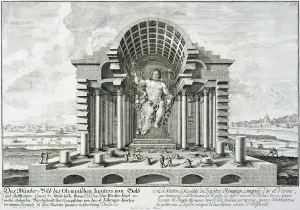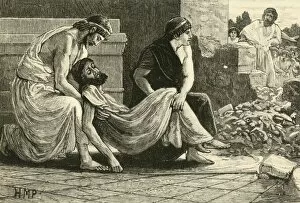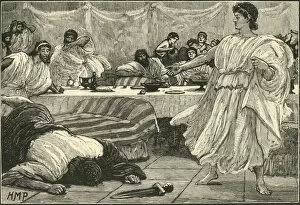Pausanias Collection
Pausanias (?-394 BC) was a significant figure in ancient Greek history, particularly known for his role as the King of Sparta from 444 to 426 B. C
All Professionally Made to Order for Quick Shipping
Pausanias (?-394 BC) was a significant figure in ancient Greek history, particularly known for his role as the King of Sparta from 444 to 426 B. C. Despite his achievements and contributions, often remembered for the crime he committed. One notable event involving Pausanias is depicted in the chromolitho artwork titled "The Crime of Pausanias. " This incident refers to the assassination of King Philip II of Macedon by one of his courtiers named Pausanias, and is believed that this act was incited by Philip's former wife Olympias, whom he had divorced to marry another woman. However, it is important to note that there are other depictions showcasing different aspects of Pausanias' life. For instance, an engraving portrays him offering sacrifices to the gods before the Battle of Plataea. This battle took place in 479 B. C. , and it seems that Pausanias sought divine favor and guidance before engaging in this significant conflict. Another engraving showcases a solemn moment where Pausanias makes a sacrifice to the gods before what appears to be a great battle. This image emphasizes his devotion and belief in seeking divine assistance during times of war. Additionally, there are artworks depicting scenes after his death. One such engraving illustrates the Death while another shows The Banquet of Philip II. These images provide glimpses into historical events surrounding both figures and shed light on their interconnected lives. Furthermore, some artworks capture elements unrelated to these specific events but still associated with ancient Greece's culture and mythology. For example, there is an engraving featuring Arethusa from the 17th century—a nymph who transformed into a spring—highlighting Greek mythological themes prevalent during that era. Lastly, we cannot overlook Phidias' remarkable creation—the Statue of Olympian Zeus made with gold and ivory.














